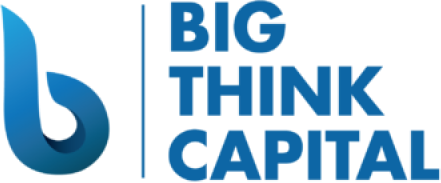Understanding The Impact of Fed Interest Rate Decisions on SBA Loans and Small Business Lending
Estimated Reading Time: 5 minutes
- Interest rates significantly influence small business financing options.
- Higher rates can lead to increased borrowing costs and tightened lending practices.
- Understanding various financing options can help business owners navigate rate changes effectively.
- Digital lending is becoming a more popular choice among small businesses.
Table of Contents
- What Are Interest Rates and Why Do They Matter?
- The Federal Reserve’s Role in Shaping Loan Markets
- How Fed Rate Changes Affect SBA Loans
- Trends in Small Business Lending
- Practical Insights for Business Owners
- Conclusion
- FAQ
What Are Interest Rates and Why Do They Matter?
Interest rates represent the cost of borrowing money. When you take a loan, whether for a home, vehicle, or small business, you are essentially paying a percentage of the total borrowed amount to the lender over a specified period. The rates set by the Federal Reserve influence market rates, which in turn impact all types of loans, including those specifically designed for small businesses.
Key Points on Interest Rates
- When the Fed raises interest rates, borrowing becomes more expensive, leading many to reconsider their financing options.
- Lower interest rates make borrowing more affordable, potentially leading to increased spending and investment by small businesses.
- The overall economic environment can also dictate consumer confidence, impacting how businesses approach financing decisions.
The Federal Reserve’s Role in Shaping Loan Markets
The Federal Reserve, commonly known as the Fed, is responsible for setting monetary policy in the United States. This includes decisions regarding interest rates, which are influenced by the Fed’s dual mandate: promoting maximum employment and maintaining stable prices.
In late 2021 and through 2022, the Fed began raising interest rates in response to rising inflation, which reached an unprecedented level. According to the Bureau of Labor Statistics, consumer prices rose by 9.1% year-over-year in June 2022, prompting urgent action from the Fed. Such decisions had immediate implications for small business financing.
How Fed Rate Changes Affect SBA Loans
SBA loans are designed to help small businesses secure funding necessary for growth, expansion, and operations. The interest rates for SBA loans are partially influenced by the Fed’s actions. Here’s how recent rate changes impact the landscape:
- Cost of Borrowing: When the Fed hikes interest rates, the cost of borrowing increases. Lenders may raise their rates in tandem, which can lead to higher monthly payments for SBA loan recipients. As of 2025, the average interest rates on SBA loans have edged higher, ranging between 6.5% and 8%, based on the maturity of the loan and risk assessment.
- Availability of Funds: Increased rates can tighten the number of loans issued. As funding becomes more expensive, lenders may become more cautious in their lending practices, leading to reduced access to capital for some small businesses.
- Incentives for Refinance: In an environment of rising interest rates, businesses with existing loans may seek to refinance their debt to obtain lower rates before further increases occur. This can be a strategic move for maintaining cash flow as businesses seek more favorable terms.
Trends in Small Business Lending
The landscape of small business lending is continually evolving, influenced by various factors beyond just interest rates. As of 2025, several notable trends have emerged:
- Alternative Financing: Traditional banks have tightened their lending criteria, prompting many small businesses to explore alternative financing solutions, including merchant cash advances, equipment financing, and lines of credit. Big Think Capital specializes in providing such options to keep businesses operational and thriving even amidst rate fluctuations.
- SBA Loan Popularity: Despite rising rates, SBA loans remain popular due to extended repayment terms and the reduced down payment requirements. Business owners seeking long-term growth should consider the potential benefits of utilizing these financing solutions.
- Increased Digital Lending: The pandemic accelerated the adoption of digital lending platforms, which allow small businesses to apply for loans more quickly and efficiently. Many fintech companies offer streamlined processes, allowing business owners to secure funds in as little as 24 hours.
Practical Insights for Business Owners
As the Fed continues to adjust interest rates, small business owners need to stay informed and proactive in managing their financing strategies. Here are three practical takeaways:
- Understand Your Financing Options: Explore various loan types, including SBA loans, merchant cash advances, and lines of credit. Understand how interest rate changes can impact your monthly payments and overall repayment periods.
- Consider Locking in Rates: If you’re thinking of applying for a loan, consider acting swiftly to lock in a rate before further increases occur. Many lenders allow you to secure an interest rate for a set period, providing a cushion against future hikes.
- Evaluate Cash Flow Impact: Regularly assess your cash flow management strategies. Higher interest rates may increase your debt servicing costs, so keeping a close eye on your finances will help you make informed decisions regarding operating expenses and revenue management.
Conclusion
The Federal Reserve’s interest rate decisions profoundly affect SBA loans and small business lending overall. By understanding the nuances of these changes, business owners can make informed decisions that position their companies for success. Big Think Capital is committed to supporting small businesses in navigating these waters. We offer a range of financing options that can align with your unique business needs, helping ensure that you have the capital necessary to fuel your growth strategies.
Are you ready to explore your financing options? Visit us at bigthinkcapital.com or speak with one of our funding experts today. Your path to securing the right capital for your small business starts here.
FAQ
1. How do Fed interest rate changes affect small business loans?
Fed interest rate changes directly impact borrowing costs for small businesses, influencing the interest rates charged on loans.
2. What are the typical interest rates for SBA loans?
As of 2025, SBA loan interest rates generally range between 6.5% and 8%, depending on the loan’s maturity and risk assessment.
3. Why should small businesses consider refinancing?
Refinancing can help businesses secure lower interest rates before further increases occur, aiding in maintaining cash flow.






